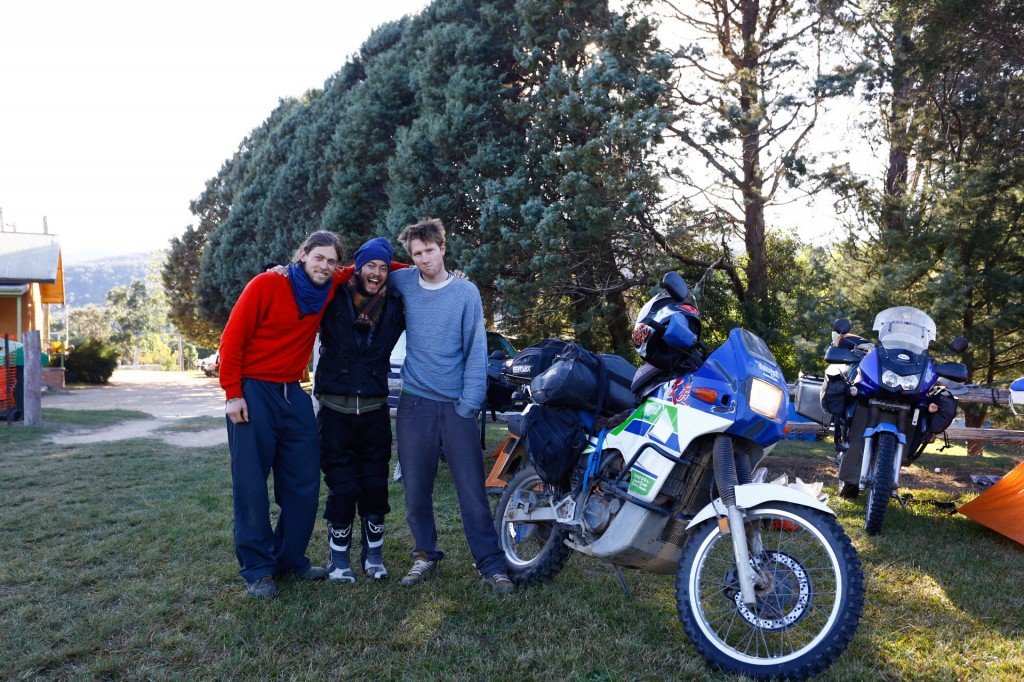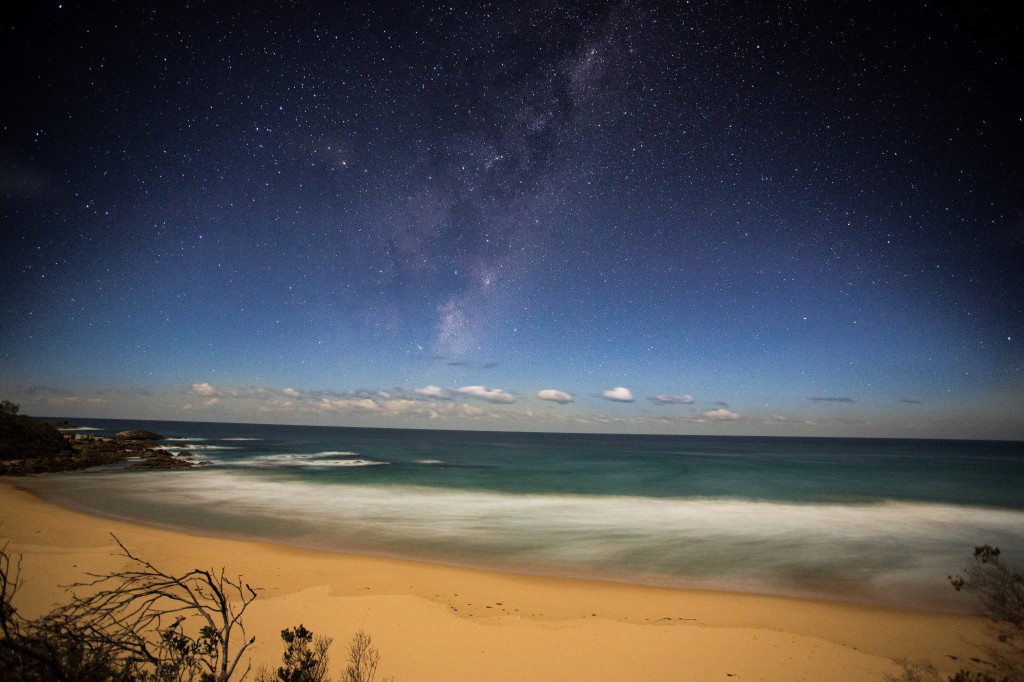Day 13: May 19th
Woke early, despite the late night, and prepared for Vince to leave.
With my birthday still very fresh in mind I paired down what I am carrying as much as possible, sending items back with Vince. Andy at Andy Strapz mentioned a system of putting a dot on something whenever you use it and getting rid of things that don’t have lots of dots on them. This basic idea has been in mind while pair down.
With Vince homeward bound, Raman and I begin a new chapter. Moseying our way up the coast we find camp early in the Mimosa Rocks national park.
People have asked me about how I get the astrophotographs like the one from the Gravestains. One of the keys is to avoid light pollution. As you can see here the Milky Way is much less visible which in this case is due to light pollution…from the moon. As it happens though I like the light of the moon so opted not to get up early (after moon set) to take the shot which would have decrease the “light pollution” but to take it in the evening.
Being away from cities and lights is important. Then you need to use an appropriate shutter speed, aperture, ISO combo that fits the focal length of you lens. For me I am using a 17mm canon L series f4.0 lens. I make the shutter speed as long as possible (before getting noticeable star trails) about 15-25 seconds at 17mm depending on how picky you are and your intended use. The you need enough ISO to get the exposure high enough. The 5D MK3 makes a big difference here. One could of course use a larger aperture lens like a 24 f1.4 which would also help.
Anyway, there are a few pointers on how I get these shots. There are a few other aspects like a tripod and post production software that also play important roles.
Enjoy…


No comments yet.